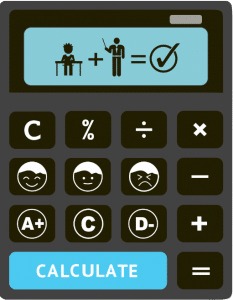Overview
You must have already learnt about fractions and decimals in year 4, but in year 5 maths, you will dive deeper into these concepts. Fractions and decimals are essential mathematical skills that you will use throughout your school years and beyond. So, let’s get started and explore these topics in more detail!
Learning Outcomes
After you have read this article, you will be able to:
- Convert between improper fractions and mixed numbers
- Find equivalent fractions for any given fraction
- Add and subtract fractions with like denominators
- Understand the difference between like and unlike decimal numbers
- Convert unlike decimals into like decimals
- Compare and order decimals
Quick Review
In year 4, you learnt about the concept of equivalent fractions, improper fractions, and mixed numbers.
You should remember that in a proper fraction, the numerator is smaller than the denominator (like \(\frac{1}{2}\)). In an improper fraction, the numerator is larger than the denominator (like \(\frac{5}{3}\)). A mixed number has a whole number followed by a proper fraction (like \(3\tfrac{1}{2}\)).
An improper fraction can be converted to a mixed number and vice-versa.
Converting Between Improper Fractions and Mixed Numbers
To convert a mixed number to an improper fraction, you need to multiply the whole number by the denominator and then add the numerator. The resulting sum is the numerator, and the denominator remains the same.
As an example, \(2\tfrac{1}{3}=\frac{2\times 3+1}{3}=\frac{7}{3}\)
This makes sense as there are 3 thirds in a whole, 6 thirds in two wholes and another third – that’s 7 thirds in all.
To convert an improper fraction to a mixed number, you need to divide the numerator by the denominator. The whole number is the quotient, and the remainder is the numerator. The denominator remains the same.
So, \(\frac{13}{4}=3\tfrac{1}{4}\).
Equivalent Fractions
Equivalent fractions are fractions that have the same value but look different. For example, \(\frac{1}{2}\) is equivalent to \(\frac{2}{4}\), and they are also equivalent to \(\frac{3}{6}\), and so on. To find equivalent fractions, you need to multiply or divide the numerator and the denominator by the same number. Let’s look at some examples:
\(\frac{2}{3}=\frac{?}{15}\)
As \(3\times 5=15\), we know the denominator was multiplied by 5. To make the two fractions equivalent, we must also multiply the numerator by 5 to get \(2\times 5=10\). Therefore, \(\frac{2}{3}=\frac{10}{15}\).
Here’s another example:
\(\frac{4}{7}=\frac{12}{?}\)
As \(4\times 3=12\), we know the numerator was multiplied by 3. To make the two fractions equivalent, we must also multiply the denominator by 3 to get \(7\times 3=21\). Therefore, \(\frac{4}{7}=\frac{12}{21}\).
Adding and Subtracting Fractions with Like Denominators
When adding or subtracting fractions with like denominators, you add or subtract the numerators and keep the denominator the same.
Here are some examples:
\(\frac{1}{5}+\frac{2}{5}=\frac{3}{5}\)
Question: why do we add the numerators but not the denominators? Think! If needed, draw a picture to find it out.
Likewise, \(\frac{5}{9}-\frac{4}{9}=\frac{1}{9}\)
Like and Unlike Decimal Numbers
Decimal numbers are a way of expressing parts of a whole number. Decimal numbers can be like or unlike. Like decimal numbers have the same number of decimal places. For example, 0.4 and 0.9 are like decimals because they both have one decimal place. Unlike decimals have different numbers of decimal places. For example, 0.25 and 0.3 are unlike decimals because they have different decimal places.
Equivalent Decimal Numbers
Adding any number of zeroes to the end of a decimal number does not change the number. So, 0.5 = 0.50 = 0.500, and so on. Why? That’s because 0.5 = \(\frac{5}{10}\), 0.50 = \(\frac{50}{100}\), 0.500 = \(\frac{500}{1000}\), right?
From your knowledge of equivalent fractions, you know that \(\frac{5}{10}=\frac{50}{100}=\frac{500}{1000}\). As the fractions are all equal, the decimals must also be equal.
So, if two or more decimals are unlike, you can always make them like by adding the necessary number of zeroes at the end.
Comparing and Ordering Decimal Numbers
You can use the concept above to compare and arrange a given set of decimal numbers from smallest to largest or largest to smallest.
Let’s say you want to order the decimal numbers 2.6, 2,52, 2.101 and 2.9 in ascending order. Your first job is the line up the decimal points and write them one below the other. Then, add the necessary number of zeroes at the end to make them like decimals. Finally, start comparing from the leftmost digit (highest place value).
Therefore, we have 2.101 < 2.52 < 2.6 < 2.9
Wrap Up
Fractions and decimals will appear every year in middle school and beyond. As you grow up, you will continue to learn more about them. Therefore, it’s important you understand the basics really well. If you need any further help understanding this topic, you can reach out to us today!







